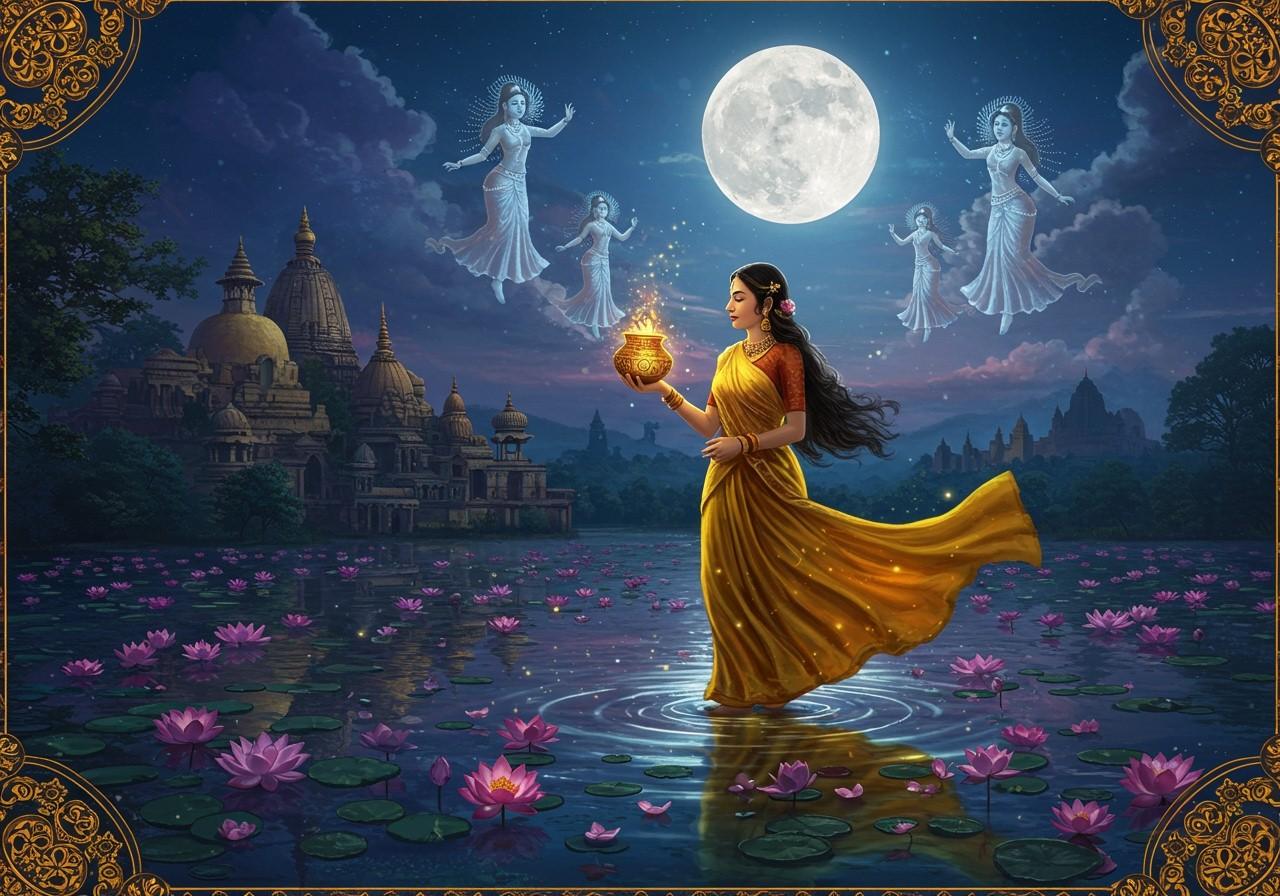
Manimekalai holds a significant position as a Buddhist epic within the rich tapestry of Tamil literature. This exploration delves into the meaning of Manimekalai, its narrative, authorship, and enduring cultural and historical relevance. Poojn.in, India’s leading store for cultural goods and services, offers products that connect you with this heritage.
Deciphering the Meaning of Manimekalai
The name “Manimekalai” originates from the Tamil words “Mani,” signifying jewel, and “Mekalai,” denoting girdle or waistband. This name symbolizes the protagonist’s transformative journey and spiritual evolution. Grasping its meaning enhances appreciation for the epic’s profound themes.
The Narrative of Manimekalai
Manimekalai, daughter of Kovalan and Madhavi, embarks on a remarkable journey. Beginning as a dancer, she undergoes a profound transformation, embracing the life of a Buddhist nun. The narrative unfolds in ancient Tamil Nadu, highlighting themes of renunciation, compassion, and the pursuit of enlightenment. Key events in her journey include:
- Encounters with Supernatural Beings: Manimekalai interacts with various supernatural entities, shaping her understanding of the world and her place within it. These encounters add a mystical dimension to her journey, further emphasizing the spiritual aspects of the epic.
- Acquisition of Magical Powers: Manimekalai gains magical abilities, symbolizing her growing spiritual strength and capacity for positive change. These powers are instrumental in her mission to alleviate suffering and promote the Buddhist teachings.
- Mission to Alleviate Suffering: Driven by compassion, Manimekalai dedicates herself to easing the suffering of others. This mission reflects the core Buddhist principle of karuna and underscores the epic’s emphasis on social responsibility.
The Authorship of Manimekalai
Kulavanikan Seethalai Sataar composed the epic Manimekalai, likely between the 2nd and 6th centuries. His intent was to disseminate Buddhist teachings through the medium of literature. The epic, written during a period of Buddhist influence in Tamil Nadu, reflects Sataar’s background and beliefs.
Cultural and Religious Context
Manimekalai beautifully illustrates the fusion of Tamil culture and Buddhist ideology. Central Buddhist tenets, such as karma, rebirth, and enlightenment, form the core of the narrative. The epic also portrays the role of women within the framework of Buddhist beliefs.
Literary Significance
Recognized as one of the five great Tamil epics (Aimperumkappiyam), Manimekalai stands out for its distinctive narrative style, eloquent language, and evocative poetic elements. Its influence on subsequent Tamil literature is undeniable, leaving an enduring legacy.
Manimekalai’s Resonance in the Modern World
The themes of spiritual growth and social justice explored in Manimekalai continue to resonate with contemporary audiences. Scholars and literary enthusiasts maintain a keen interest in the epic. Modern adaptations, including performances, translations, and academic studies, ensure the preservation of this cultural gem for generations to come.
How Poojn.in Supports Your Connection to Tamil Heritage
Poojn.in provides a curated selection of items to connect with the rich Tamil Buddhist traditions woven into Manimekalai:
- Traditional Lamps: Discover authentic brass and copper Kuthuvilakku lamps, traditionally used in Tamil Nadu for meditation and prayer. These lamps create a sacred ambiance, enhancing your spiritual practice. Explore our collection of lamps.
- Meditation Essentials: Enhance your meditation practice with organic cotton cushions and mats, promoting comfort and focus. These natural materials support a grounded and peaceful meditative experience.Find your perfect meditation accessories.
- Incense and Holders: Immerse yourself in traditional Tamil fragrances with our natural incense sticks and holders. These aromatic offerings create a serene and uplifting atmosphere for prayer and reflection. Browse our selection of incense.
Visit www.poojn.in for our complete range. We offer secure packaging and India-wide delivery.
Conclusion
Manimekalai transcends its historical context; it remains a timeless epic, offering enduring inspiration and wisdom. Its unique blend of Tamil culture and Buddhist philosophy imparts invaluable lessons on compassion, renunciation, and spiritual development. Engaging with Manimekalai, whether through reading, study, or performance, fosters a connection with our heritage and provides insights relevant to contemporary life. It allows us to preserve our traditions while embracing the timeless values this epic espouses.
Further Explore the Ramayana on poojn.in:


